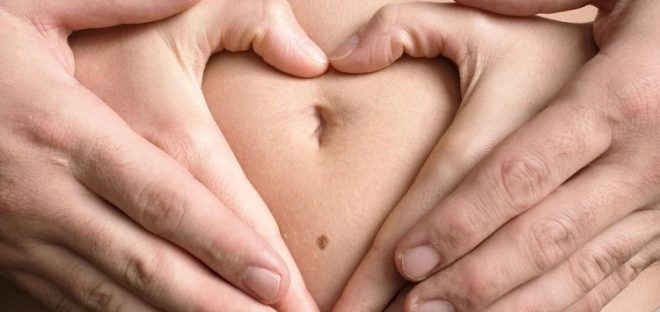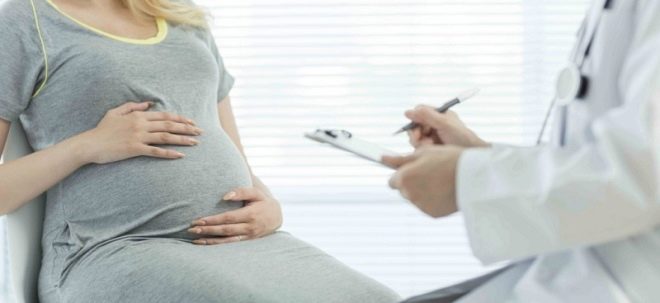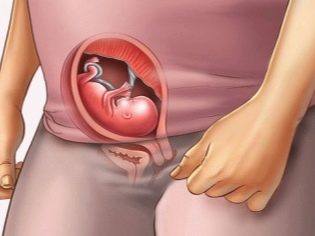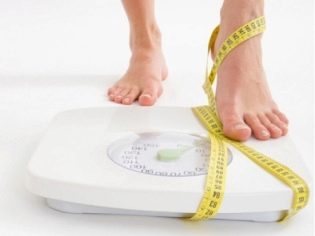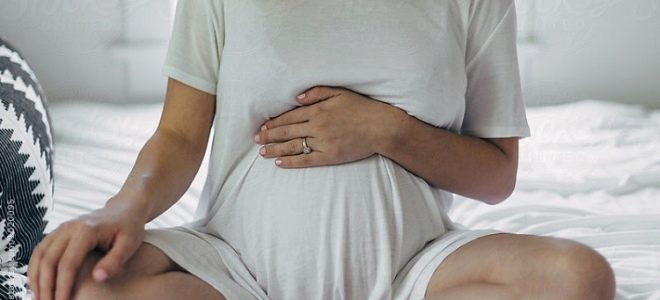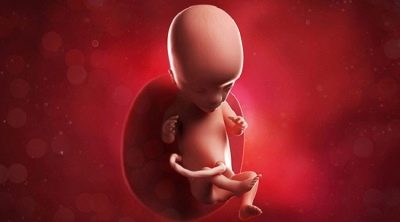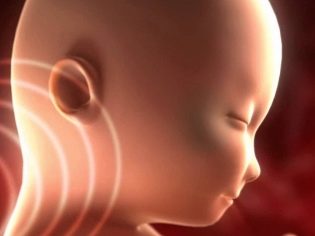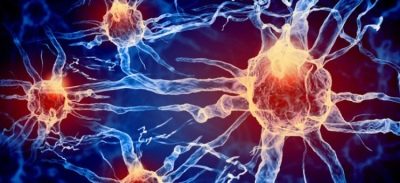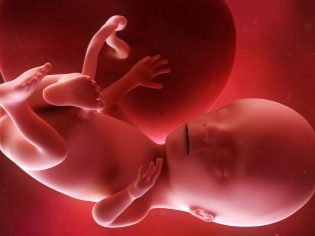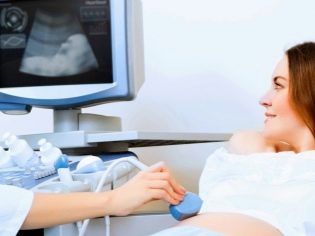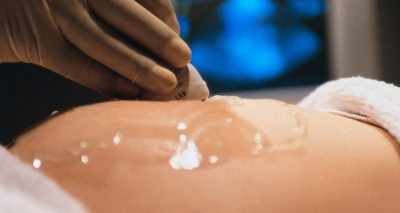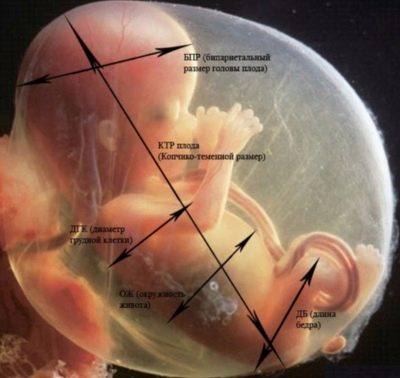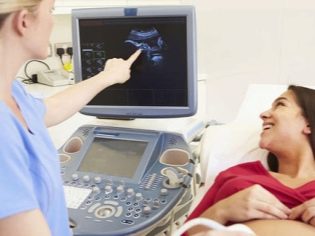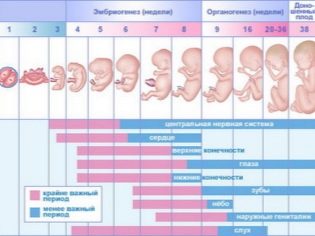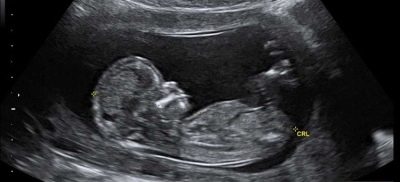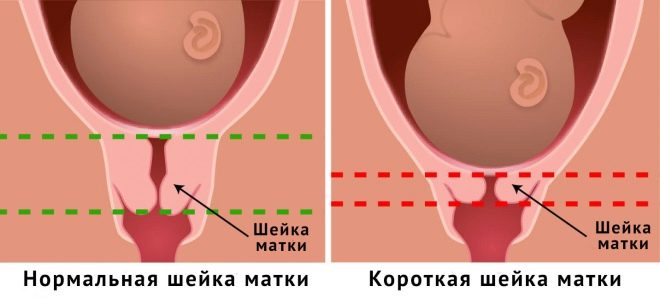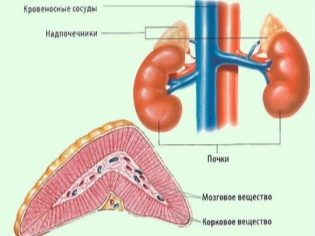15 week of pregnancy: what happens to the fetus and the expectant mother?
15 week of pregnancy - the "golden" time for mother and baby. The state of health of a pregnant woman is wonderful, if something tormented her in the first third of the gestation period, now all the troubles are over. The baby is still very free in the cozy space of the uterus, his movements are not constrained by anything. About what are the features of this obstetric week, what happens to the baby and the future mother - in this material.
How many months is it
By week 15, all women, with very few exceptions, are in the dispensary observation in their antenatal clinic. And this fact itself becomes the reason that there is no confusion in the timing of pregnant women. In the earlier periods there are some discrepancies - the woman believes that she has one term, and for some reason the doctor puts on a couple of weeks more. Now women "in position" have become accustomed to such a concept as obstetric gestational age. It is considered from the date of the beginning of the last to the onset of pregnancy menstruation.
15 obstetric week - this is the 13th week from conception. Since the beginning of the delay, 11 weeks have passed (more than 77 days).
There is the fourth month of pregnancy, and this period is considered the easiest and easiest for the entire pregnancy. The main examinations were left behind, now a woman can relax a bit and tune in to the “equator”. Very soon the pregnancy will reach half of its term.
In order not to be confused, it should also be clearly understood that 15 obstetric weeks are not 15 full weeks, but 14-15 obstetric weeks, in other words, six days that are between 14 and 15 weeks.
How does a woman feel?
Hormonal "revolution" in the body took place. Now progesterone and hCG have accumulated enough to ensure the normal development of the baby in the future, and in large quantities these substances are no longer produced. As the hormones become more stable, the woman feels much better. Many say that at the beginning of the 15th week they experienced an unexpected surge of strength and vigor.
Some women at this time do not experience anything unusual, most often these are the “lucky women” who have not had the opportunity to experience the first trimester toxins. If, at the beginning of the pregnancy, the woman had a hard time, then right now she gladly notes that she has become light, good, pleasant. Nausea receded, morning vomiting is no longer repeated, the smell from the kitchen is not sick, and the perfume does not cause disgust.
Drowsiness, which pursued the future mother from the first weeks of pregnancy, begins to disappear, and the woman becomes more vigorous and efficient, she no longer has great fatigue in the afternoon, less often a headache. Headaches, which also resulted from exposure to large doses of progesterone, become less intense. Mood improves. There are no sharp emotional drops, unreasonable tears and anxiety. Understanding that dangerous period in terms of the probability of miscarriagemakes a woman more confident, calm, balanced and peaceful.
Among the unpleasant sensations that are quite real at this time of gestation are mild stifling pains below. belly, in its lateral parts, and also in a waist. They usually have a quite understandable physiological origin - the uterus grows, the woman begins to feel her, and the ligaments holding the female genital organ stretch out, and this process is accompanied by those episodic pains.
Some women continue to experience some difficulty in nasal breathing - rhinitis, which is caused by swelling of the mucous membranes, may persist, but in most cases it goes along with toxicosis and other unpleasant "satellites" of the first trimester of pregnancy.
A pleasant "event" of obstetric week 15 is the normalization of urination. Women who have previously suffered from frequent urges begin to visit the toilet less often. But the growing uterus slowly and steadily rises and already seeks to tighten the diaphragm, in connection with which this week or week later the woman may have shortness of breath, it becomes harder to breathe. This condition will last until the end of the third trimester, and only when the stomach "drops", a few weeks before the birth, can she breathe again with a full breast.
Some of the expectant mothers in the 15th week continue to suffer from heartburn, and also often there are constipations. Physiologically, these unpleasant phenomena can be explained by the pressure of the growing uterus on the digestive organs. Also, they are often associated with a violation of the principles of good nutrition during pregnancy by a woman. By the way appetite from the second trimester begins to grow, and the main thing here is not to overdo it and not to gain extra kiloswhich definitely will not benefit either the mother or her child.
Changes in the body
The most important change in the future mother's body this week is a growing belly. Now it is noticeable to everyone. Few who manage to keep a pregnancy secret at this time. But this is no longer required, because all the bad "signs" that "forbid" a woman to disclose the fact of her pregnancy at an earlier date no longer play a role, because the threat of spontaneous abortion is now minimal.
Externally, the woman has changed a lot. She rounded, the waist "added" 3-4 centimeters, hips look wider. Normal weight gain to the source this week is considered 3-3.3 kilograms for thin women, 2-2.6 kilograms for women with a normal physique and not more than 1.2 kilograms for women with obesity. This increase consists of the mass of the fetus, amniotic fluid, placenta and fat reserves in the body of the mother, which diligently creates the pregnancy hormone progesterone.
Weight gain above these values is a reason to consult with a doctor and choose the right diet and physical activity.
The height of the standing of the uterus this week is 12-13 centimeters. The bottom of the uterus is close to the middle of the vertical between the pubis and the navel. The uterus has already reached such a size that it can be easily felt through the anterior abdominal wall.
The average length of the cervix at the current period is 36 mm. In the second pregnancy, it is slightly more - up to 36.7 mm. The uterus is above the womb, it is already in the abdominal cavity. The uterus itself begins to stretch until it is more rounded, but gradually the shape changes to an oval. The ligaments holding this organ are stretched, which can cause weak aching pains and tingling in the lower abdomen, in the lower back. Due to a change in the center of gravity, complaints may appear that the back hurts.
The woman is more actively producing melatonin, because of this, freckles can become brighter, some pregnant women are beginning to appear pigment spots and large spots. You should not be afraid - the features of pigmentation during pregnancy are such that after giving birth, even the biggest pigment “marks” will not leave a trace.
Breasts continue to grow, but not as intensively as in the first trimester. Therefore, at the 15th obstetric week of pain, itching in the nipples is practically not observed. The nipples themselves darkened a few weeks ago, now many women, especially those who have given birth and who have breastfed, are producing colostrum quite intensively - a “prototype” of future breast milk.
To make a large and lush breasts easier to "wear", a woman needs a bra with wide straps and comfortable cups. If there is so much colostrum that it soils clothes, you can wear a nursing bra - it has special internal “pockets” for liners that will not allow blouses and T-shirts to get dirty.
This week there is another 20% more blood in the woman’s body. This is due to the intense growth of the placenta. therefore short-term bouts of dizziness, low blood pressure can occur. If the pressure decreases gradually, the woman usually does not feel anything special. But abrupt jumps in blood pressure can be quite well felt.
In case of loss of consciousness, headaches, nausea and weakness, you should definitely visit the doctor ahead of time, without waiting for the planned admission to the antenatal clinic.
The level of human chorionic gonadotropin (hCG) begins to decline. It reached its “peak” at 12-13 weeks and now it will fall down to the very birth. Now the concentration of this hormone is within 6140-130000 Honey / ml, and during pregnancy with twins - twice as high.
This week is taking shape and the mother-placenta-fetus system begins to function. Uninterrupted blood flow is established between the uterus and the placenta (uteroplacental blood flow) and between the fetus and the placenta (fetoplacental blood flow). The placenta completes its formation, fully protecting the child from everything negative from the outside and nourishing him with all that he needs.
The discharges characteristic of week 15 are no different from the accepted norms for the previous weeks. Their quantity should be moderate, the color should be white or slightly yellowish, the smell should be absent, but the presence of a slight sour smell is not considered abnormal. Naturally, there should be no itching, pain and other discomfort. If the discharge becomes greenish or gray, acquires an unpleasant odor, this indicates inflammation, infection, localized in the genital tract.
Thrush with its characteristic white cheesy discharge this week happens infrequently, but if this happens, you should immediately inform your doctor.
The most dangerous are bloody discharge, blood, brown or pink. This color gives them blood in different concentrations. These may be symptoms of problems with the cervix, with the placenta.
If any bleeding occurs in the presence or absence of pain, you should immediately call an Ambulance and go to a medical facility. Self-treatment and the hope that “everything will pass by itself” can be extremely dangerous for the health of the child and the expectant mother.
Stir - when to wait?
Pregnant women at week 15, after reading reviews on the Internet, begin to seek out the first, barely noticeable signs of the first movements of the baby. Pimps should not worry about this until 20 weeks. However, women who have previously become mothers can theoretically feel the first movements of their baby at this time, but for the time being it is rather difficult to distinguish them from the intestinal motility. Women who bear twins, at week 15, often feel the movement of their babies, but so far rarely and weakly.
It is not necessary to count the movements now, even if they appear. So far, it has no diagnostic value.Most likely that at week 15, very thin, slender women and girls will feel the first light touches of the baby from the inside. Women of a more dense physique cannot yet grasp these unusual sensations.
Fetal development
The fetus at the 15th week of pregnancy reaches a significant size - it can be compared with a solid orange. His full height now reaches 15-17 cm, and his weight is almost 75 grams. The baby grows much faster than his mother can imagine - at the beginning of the 15th week it is about 14 cm long from the head to the heels, but after six days it will grow by as much as three centimeters and increase the weight by 25%!
Appearance of the baby
In the shape of a child there is nothing left of the embryo. There is no tail, which is peculiar to all mammals at the embryonic stage of development. The baby looks quite human, however, certain imbalances are still observed. So, the head of the baby remains large compared to the rest of the body, but it is no longer oval, as before, but rounded.
Hands and feet continue to grow. The upper limbs are still longer than the lower, the balance between them will be achieved later.
The fruit is thin and ungainly. His entire body is covered in skin folds. Such thinness - a consequence of the lack of subcutaneous fat: until it is produced. The skin itself has a red color due to the fact that through it the grid of blood vessels is visible. When subcutaneous fat begins to be produced, both of these "blemishes" in the exterior of the little ones will be eliminated - he or she will become a puffy pink with delicate skin.
Hair grows on the head of a baby now, but they have no color - all babies are natural blond at this time. At week 15, the baby has cilia and eyebrows. The eyes are still closed, the eyelids are fully formed. This week, the formation of auricles ends, now the external hearing organs of the baby look exactly as they will look like at the time of his birth.
Ears and eyes "stood up" in the proper places. Little face now does not look strange. The nose develops and grows. Already, you can consider the profile of the fetus, and some kids are already snub-nosed, while others have an impressive nose, just like a mom or dad. In appearance this week, more and more individuality appears.
Now, on small fingers, small nails are growing. Yet the nail plate is very thin and delicate, they begin to harden much later. Unique fingerprints appeared on the pads of the fingers - each kid has his own pattern on his fingers, it is impossible to find two identical ones.
Sense organs
Despite the fact that the formation of the senses is complete, the baby cannot yet see and hear in the full understanding of these words. The retina of his eye now distinguishes the light that penetrates through the very thin eyelids covered. This can be checked using ultrasound. If you shine a flashlight on mother's belly, then the baby will begin to move actively, not knowing yet another way to respond to the stimulus, which is a bright light.
The baby already has a rumor, but it still resembles that of reptiles - it is vibratory, that is, the crumb reacts to special vibrations created by sound waves - to my mother's voice, to the sound of her heart, to loud sounds on the other side of my mother's belly. About a month later, the inner ear will begin to function fully, transform the sound waves, and then the child will begin to hear in the same way as we, however, adjusted for the aquatic environment and the thickness of the mother's abdominal wall.
Already, the baby in her mother's womb has tactile sensitivity - the nerve endings on the skin allow him to feel touches if he accidentally touches the walls of the uterus or to himself.
The baby has already distinguished tastes for a long time: the papilla receptors on the tongue and cheeks on the inner side of them are working properly, and the crumb already prefers sweet to salty or sour.But the baby does not yet distinguish smells, because the nasal passages are covered with mucus and there is no breath in the usual sense of the word, The baby gets oxygen from the maternal blood.
Endocrine system
From the 15th week of pregnancy the baby goes to a new level - the endocrine glands, which produce all the hormones necessary for growth and development, begin to work. The endocrine system begins to function. The pituitary gland begins to control the production of hormones and secretion glands. The pancreas produces insulin, and the thyroid produces thyroid-stimulating hormones, thanks to which, including the bones of the child, begin to accumulate calcium and harden. The adrenal glands, thymus and epiphysis are already beginning to function.
In addition, from the 15th week the baby’s own endocrine glands start to work - sweat and greasy. Own endocrine system will allow the baby to better adapt to changing habitat conditions, provide metabolism, it will also “boost” the development of immunity.
Nervous system
The central nervous system in the current obstetric week takes control of the baby’s body. Now every week his movements will become more and more arbitrary and conscious. In the brain, which already has hemispheres and all departments, the cortex begins to appear at this time. This is the very gray matter that will allow the child to think after birth and will provide higher nervous activity.
The cortex develops from the embryonic ectoderm, the anterior part of the neural plate. All six layers of the cerebral cortex are to develop in the near future.
Red bone marrow at this time provides for the production of blood cells. The spinal cord conducts impulses from all organs and systems to the brain. Now all the components of the central nervous system are improving and “hone” the interaction. Already, in the "arsenal" of the crumb there are several important reflexes for survival - he knows how to suck, swallow, push off with his feet from obstacles. If the baby is frightened, he tries to hide, the instinct of self-preservation begins to work.
Internal organs
The gallbladder of the baby has grown up, it functions by producing bile, now this fluid begins to enter the intestine. It will be the one that will color the original calone "meconium" in a dark green, almost black, color. The intestine itself has learned to shrink. Up to 70 times a day, the child’s intestines “rehearse” peristalsis, despite the fact that there is no complete digestion yet.
Thanks to the well-functioning work of the stomach and kidneys, the child now swallows the amniotic fluid and pees with regularity. Urine enters again in the amniotic fluid, which very often renews its composition and remains for the crumbs a safe, sterile environment.
The heart of the child functions in full force. Now this small organ is doing a great job - it ensures blood supply to all parts of the body, and 23-25 liters of blood are being pumped over to the baby's heart every day. Heart rate at a 15 week average is 157 beats per minute. Variations from 146 to 168 beats per minute are possible.
Already, by the nature of the fetal heartbeat, it can be concluded how well the fetus feels - hypoxia causes an increase in rhythm, and long-term chronic hypoxia - a decrease.
The lungs and bronchi of the baby are formed. The respiratory system actively "trains", making movements that after the birth of the crumbs will become the basis of breathing. The liver is now becoming a digestive organ.
Child sex
You can already try to determine the sex of the baby on ultrasound, however, provided that the baby is located to the sensor with the desired part of the body. The genitals are formed and mature enough to be visualized. It is at this time that many pregnant women go on an ultrasound scan to find out the sex of the baby, but the number of erroneous conclusions is now quite large. In order not to doubt, not to think whether the doctor was mistaken or not, it is better to wait another three weeks.Then sexual identification can be carried out more simply, and there will be much less room for doubt.
Fruits-boys now produce their own sex hormone - testosterone. In girls, estrogens will begin to be produced a little later, while the little princess has enough maternal sex hormones. The internal genitals are fully formed - boys have a prostate gland, and girls have ovaries with millions of eggs.
In females, the ovaries descended from the abdominal cavity into the pelvis. In boys, the testicles have not yet descended into the scrotum, this process has not even begun yet. Their testicles still remain in the abdominal cavity. Down they will start from about the 19th week of pregnancy, and in the scrotum from the small pelvis will drop to 28-30 weeks.
Now the development of the child begins to "adapt" to gender. So, male fruits gain weight a little faster than female, and boys grow a little ahead.
What can baby?
Despite the fact that the baby is in the womb and depends entirely on it, he has already learned a lot and can do a lot. His muscles develop rapidly. He already has a lot of different movements and facial expressions.
At week 15, most of the children know how to smile and readily demonstrate this new skill to the doctors of ultrasound diagnostics, if such an examination is now prescribed to a woman. In addition, all children know how to frown, yawn, hiccup, fold lips with a sponge. Kids are keenly interested in what is happening around, touch the umbilical cord, themselves, feel their face, put their fists in their mouths and suck them with pleasure, just like they will do after their birth.
Some kids are already beginning to show "character" - some cover the genitals with pens or turn away from the ultrasound scanner, while others do not mind the attention to their own person and are happy to pose, showing everything they have to the doctor. Some kids are shy and “freeze” from loud sounds, while others are curious and mobile and, on the contrary, come into active movement from external pathogens.
Fetus on ultrasound
Ultrasound as a type of diagnosis at 15 weeks is not considered mandatory. Therefore, it is not prescribed for a woman; this period is in the middle between the first planned and second planned prenatal screenings. If there are no special reasons, which include deterioration, well-being, the appearance of atypical discharge or pain, then the pregnant woman is not sent to the ultrasound room. Many mothers themselves go for such a diagnosis, for example, to find out the sex of the child or to look at the crumbs in three-dimensional format on a 3D ultrasound.
Preparation for ultrasound is no longer required - The uterus is large enough to allow an examination through the anterior abdominal wall without a filled bladder. The woman also does not need to take drugs that eliminate increased flatulence in the intestines, the bowel loops are already pushed back by the uterus.
Baby is clearly visible in all angles. Mom is given to listen to how his little heart knocks, and also shows how the crumb moves. If the genitals are visible, they will be shown separately. When the mother asks if everything is in order with the baby, the doctor will call his main parameters, they are now talking about how the growth and development of the baby proceed. This week is characterized by such parameters.
- BPR. This size between the parietal bones is also called the transverse size of the head (bipariented). This week it is between 27 and 31 mm. If the PDU is larger, the doctor may suggest a tendency to form a large fetus. A significant excess of BPD is the basis for a careful study of the structures of the brain of the child, because the head can be large due to the presence of tumors, dropsy (hydrocephalus).The lag of the BDP is considered as a sign of an incorrectly established period or the delay of intrauterine development of the fetus.
- LZR. This size is most likely to be measured in the current obstetric week for the first time. It is called the fronto-occipital, because it measures the distance from the frontal bone to the occipital. Together with the PDU, this size indicates the development of the baby, the proportionality of its head. Normally, at week 15, LZR ranges from 25 to 39 mm.
- Paired bones. At week 15, DBK (length of the femur bones) is measured, as well as bones of the shoulder, lower leg. The normal length of the thigh is 10-18 mm, the bones of the lower leg are now in the range of 7 to 17 mm, the length of the humerus is 10-19 mm. The length of the bones of the forearm is not yet measured - the forearms are still small.
- Tummy circumference. The baby is still thin, his tummy cannot boast with solid dimensions. At week 15, values of about 90 mm are considered normal.
- Head circumference. The head is still the largest part of the body of the baby, so you should not be surprised that the head circumference is now quite large - in the range of 110-130 mm.
KTR (coccyx-parietal size) is rarely measured this week, because it becomes difficult - the baby is big and cannot fit within the range of the sensor. And even more so for the KTR now do not compare the terms of pregnancy, now there are other indicators for this. However, if it is measured, now it will be in the range of 87-90 mm. Moreover, if the period is approximately equal to 14 weeks and 3-4 days, then the size from the tailbone to the top of the head will be less than the same indicator at 14 weeks and 5 days.
If for some reason a woman is recommended an extended ultrasound scan, which is done exclusively on expert-grade devices, then Here are some more very curious sizes that are typical for the 15th week of pregnancy:
- the width of the scapula crumbs is now at the level of 6-11 mm;
- the length of the foot of the baby at week 15 is equal to 8-11 mm;
- the diameter of the orbit of the fetus - 7-9 mm.
As for the possible pathologies that a baby may have, this week it is quite difficult to diagnose them despite the level of development of medicine, because all the internal organs are still very small. For example, there is no way to know if the lungs are healthy, because their formation is still ongoing. Anomalies of the brain are still difficult to assess, except for cases of anencephaly (absence of the brain).
There is no way to assess the structure of the kidneys and bladder. The only exceptions are cases of gross pathologies - for example, the absence of one or two kidneys. Everything else will be seen later.
But at this time, the digestive organs are well visualized, the doctor will be able to see gross defects, for example, the esophagus atresia. No difficulty in assessing the skeletal system.
Possible risks and hazards
Despite the fact that the most dangerous period has passed, and a sudden miscarriage at 15 weeks is practically impossible, a woman should closely monitor her state of health and record any changes. The list of dangers that can happen precisely at this time is quite large. Let's look at what threats may lie in wait for a pregnant woman this week, how to recognize them and what to do if this happens.
The threat of miscarriage, non-developing pregnancy
As already mentioned, the probability of a threat now is minimal, but it is not zero, and therefore it is worth being vigilant. If your lower back hurts, there are bloody or spotting secretions from the genitals, the woman should definitely see a doctor, and call an Ambulance.
Timely access to a specialist in 97% of cases allows you to quickly determine the cause and save the pregnancy.
If there was a bloody "daub", and the ultrasound showed no signs of the life of the baby, we can talk about missed abortion. For reasons unknown to science, this happens for a period of 15-17 weeks.Even if a woman has successfully overcome other “critical” periods - 3-4 weeks, 8-10 weeks of pregnancy, then now irreparable can happen. The likelihood of fetal death during this period is small, but it exists.
Unfortunately, medicine cannot help in this case. If the child has died, then the only thing that can be done for a woman is to release the uterine cavity from the fetus as soon as possible, because internal inflammation can cause sepsis.
Tissue tissue samples are taken for genetic analysis to find the cause of his death. They do not always find her, but if they find her, this information will be of great value to the doctor, who will later help the couple plan a new pregnancy.
Calcium deficiency
Calcium deficiency in a woman’s body may be due to the fact that she doesn’t have enough of this mineral in her blood, and the need for a child who is actively hardening bones and growing muscles is high in calcium. Hypocalcemia can manifest itself in different ways. Most often, a woman becomes brittle nails, teeth can deteriorate, gums and hair begin to bleed. Often, future mothers complain of cramps in the legs - the calf "reduces" by evening or at night in a dream.
To correct the situation will help the doctor. It is not necessary to wait for a planned intake in the antenatal clinic, you can call him and clarify which vitamins and minerals you can begin to take, whether it is necessary and advisable to take additional calcium supplements.
Cold, flu, ORVI
All these unpleasant diseases, if they still could not be saved from them, can no longer harm a child as if they had happened earlier, in the middle of the first trimester. The placenta is now doing well with the protective barrier function, and the woman can already even take some medications to alleviate her own condition in case of illness.
Do not immediately begin to drink pills when symptoms and signs of illness appear. Not all drugs that used to be well helped are now allowed. A woman in the position should definitely call a doctor and consult with him about how best to be treated if she has contracted the flu or ARVI.
The most dangerous thing in these most common seasonal ailments is high fever. Strong and prolonged fever can cause problems with uteroplacental and placental blood flow. To help reduce the temperature of the doctor, who will tell you which of the antipyretic drugs can now take the expectant mother.
"Short" neck or ICN
If a woman has previously been diagnosed with ICN (istimiko-cervical insufficiency), the cervix is shortened, then at week 15, as a rule, certain measures are already being taken to preserve the pregnancy.
Some women show complete bed rest in the hospital, others have already been installed pessary or stitched to the cervix. If the cervical failure is not expressed, then the woman is allowed to lead a normal life, just not to lift weights and not to burden herself.
If there is a diagnosis such as the central nervous system, regardless of the method of treatment proposed by the doctor, the woman should remember that the greatest danger for her is the hypertonicity of the uterus - the cervix can not stand, and then the miscarriage begins. To determine the tone of the uterus is quite simple - the stomach becomes hard, almost "stone", pulls the lower back.
Adrenal cortex dysfunction
If a woman has previously experienced problems with the state and functioning of the adrenal cortex, right now she may feel worse. This is possible provided that she bears a boy. Testosterone, which is produced in a baby, enters the blood of the expectant mother, and if there are difficulties with the adrenal glands, and our own testosterone is exceeded, an excess of this hormone may occur.
Women who have such a problem should definitely visit their doctor this week and give their urine for 17-cc (analysis for 17-ketosteroids).
Hemorrhoids
The uterus grows and squeezes the intestines, which leads to constipation, at the same time increasing pressure on the inferior vena cava. Together, all these factors often lead to the fact that a woman has hemorrhoids. This unpleasant disease associated with impaired blood flow in the hemorrhoidal veins necessarily requires treatment.
It is not necessary to treat hemorrhoids with folk remedies during pregnancy, it is best to go to a doctor, do not hesitate to tell about the problem and get an appointment. In the second trimester, the list of drugs allowed to relieve the symptoms of hemorrhoids, compared with the beginning of pregnancy is significantly expanded, the doctor will definitely select an effective and harmless drug.
Recommendations to expectant mothers
Simple recommendations that are relevant to women who are in the 15th week of pregnancy will help to avoid most of the complications and not to darken the second trimester with illnesses and deterioration of health.
Mood
Maintain a good mood and a positive frame of mind. This is very important, because the baby already feels subtly all the changes in her mother's mood. Perinatal psychologists say that right now - in the fourth month of gestation - the basic world outlook of the crumb is laid, it is decided whether it will be an optimist or a pessimist. To increase the chances of a baby becoming an optimist, It is important for a woman to watch her emotions, to protect herself from communication, which brings negative, from stresses and experiences.
Now is the right time to watch and review good films, fairy tales, favorite cartoons, read good and interesting books, start reading magazines and books for young parents, telling about the subtleties of child care.
clothing
Women who proudly demonstrate their rounded tummy to others, should not forget that clothes should not be too tight, press in a belt, in the hips. Such things can disrupt blood circulation. You should not wear things from synthetic fabrics, in them the skin does not "breathe", and sweating in pregnant women is increased regardless of the season of the year.
Women who are unpleasant when their tummy is closely examined in public transport or on the street should wear free and spacious things, they can still hide an “interesting position”, and to divert attention from the abdomen, it is worth picking up a beautiful bright scarf, hat, noticeable beads - at the sight of a pregnant belly will be given much less attention.
Sleep
With falling asleep at this time usually problems no longer arise, as the hormonal background stabilizes, sleep improves. But many women in the 15th week have quite real problems with sleeping postures, because on the back it becomes uncomfortable to sleep, the uterus presses, and you cannot lie down on your stomach at all.
A woman is already important to learn to sleep on her side. To make sleep more comfortable now and then, in later periods, special pillows for pregnant women will help, which can be clasped with legs and on which a large and heavy belly fits comfortably in the third trimester.
Bandage
Prenatal bandage is not a whim and not a medical appointment according to the indications, although sometimes it is impossible to do without it with certain complications of pregnancy. Bandage is an effective way to facilitate the period of carrying a child. Already, a woman can visit the nearest orthopedic salon and choose a convenient device that will carefully fix the abdomen, support it from below, easing the load on the legs and back.
Sex
Sexual relationships at week 15 are not contraindicated unless the doctor has a different opinion on this matter. In case of insufficiency of the cervix, in some other pathologies of pregnancy, sex is not recommended, but if everything is proceeding well and the doctor does not object, then the spouses may not limit themselves to pleasures. It is only important not to forget that poses with deep penetration are now undesirable, as is the use of warming or cooling lubricants.
Nutrition
Proper nutrition now helps to avoid many problems - heartburn, constipation, hemorrhoids, abnormal weight gain. If a woman has not yet adjusted her diet, now there is a great opportunity to do it. It is important to avoid prohibited foods - smoked meat, marinades, canned food, fatty meat, mayonnaise, fried and spicy dishes. Every meal should be balanced: slow carbohydrates should be supplemented with fats and proteins.
It should be eaten in small portions 5-6 times a day. Do not forget about clean drinking water. It should be consumed at least 1.5 liters per day. Salt and sugar limit to a minimum. But fresh fruits, vegetables, greens and low-fat dairy products are only welcome.
Now it is important that the diet was enough foods containing calcium, magnesium, potassium, vitamins A, E, C.
Physical activity
A woman, if she is not prescribed bed rest, can lead a normal life at 15 weeks, go for walks, do gymnastics, do swimming, and do yoga. It is important to remember that one cannot be in too long a position. If the work of the future mother is associated with sitting or standing in one place, it is necessary to make five-minute pause-warm-ups as a rule in order to adjust the blood supply, to relieve the legs, tailbone, lower back.
Reviews
Many mothers describe 15 week as the best time for the entire pregnancy, because now it is still very easy and quite calm. Many pregnant women started diaries right now, in which they record the results of self-weighing, menus, mark the first stirrings, if they have already occurred, or are just preparing to make such an exciting record.
Only a small number of pregnant women at this time begin to attend special courses, where theory and practice go side by side - a woman will learn a lot about her pregnancy, as well as about the upcoming birth and care for the newborn. These courses are valid for every female consultation.
If possible, it is better not to postpone their visit to the prenatal period, but to sign up now. This, according to moms with experience, helps more thoroughly prepare for the upcoming replenishment in the family.
About what happens to the fetus and the future mother in the 15th week of pregnancy, see the next video.

